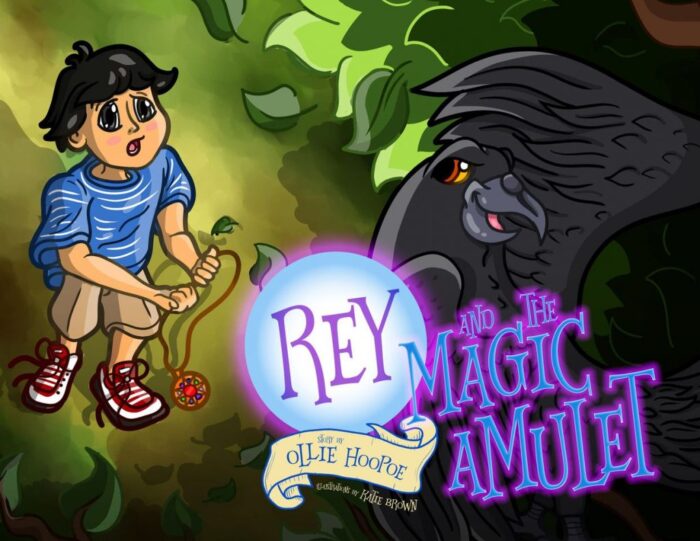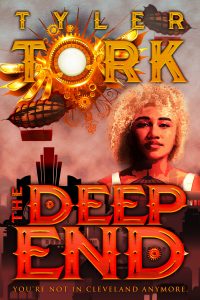Dear Tyler (writes Dan The Man Williamson III of Duluth MN),
I recently inherited a time machine, and I’d like to use it to indulge my passion for novel gourmet cookery. I have access to a range of now extinct ingredients, but my problem is that I don’t know which things are edible, how to prepare them, or what they combine well with. Can you help? Is there a cookbook?
Dan,
First, congratulations on obtaining a time machine. They’re worlds of fun and very useful. I don’t know of any time travel cookbooks offhand, and of course we’re talking such a wide range of ingredients that you’d need a whole shelf of books, at least. I’m not a chrononaut myself, but one does pick up some things by eavesdropping at science fiction conventions. So there’s lore, but nobody has codified it. This might be a good project for you to undertake, given your interest in the subject.
The field of intertemporal gourmet cooking is so vast it’s hard to know where to start. There are so many ingredients available in different times and places, and such a tiny percentage have been tried, that it’s a daunting project. I do think it’s time to make a start, though. Anything you come out with will probably be eagerly snapped up by other time-traveling gourmands. So, again, not an expert, but here’s what I’ve heard.
If you’re talking historical times, the ground is already pretty well covered, since you just have to find a book of the traditional cuisine of the region you’re visiting. These abound, so you’ll probably want to concentrate on prehistory.
There are some recipes already being passed around in the time-traveling community, so if you get the word out, people will probably send you some (feel free to comment here, folks!). Also, you might let folks know that you want ingredients to try out. There’s not much of an established market yet for this stuff, which of course is part of what makes it exciting. You’re not going to kill a whole woolly mammoth just for yourself, but if someone’s planning to bring one down you could sign up to buy parts (which is mostly how they finance those expeditions) — but you have to hear about it first. I’ve found people are usually glad to bring things back if you can tell them exactly what you want, preferably with a picture, and they don’t have to go out of their way for it, and it’s not too heavy (if it’s more than 10 kg or so, you might offer to help pay for the electricity to transport it). Keep a list of the times and places you’re interested in, so that when you find out someone’s planned coordinates, you’ll know what to ask them to bring back. Oh, and be prepared to return the favor!
One problem: unless you find a specialist in a particular milieu, it’s hard to get enough information about the local ingredients to assemble a whole meal from what’s available locally, that goes well together. And, many recipes have been refined through centuries of experiment; even if you know the local ingredients well, it takes a genius chef to take a bunch of new flavors and make them work together as anything but a novelty dish.
That’s why, if you have a prehistoric ingredient, it’s much easier to find a pleasing combination of it with modern ingredients. Many existing chicken, duck or pheasant recipes adapt nicely to some of the smaller dinosaurs, for instance. I haven’t had it myself, but I hear Thescelosaurus a l’orange is a treat.
So, I suggest you focus on recipes that mix conventional foodstuffs with just one or two prehistoric ingredients. If you’ve actually done any time traveling you’ve probably heard of some of the better known ones, e.g.:
- Eoraptor eggs: Some people like the yolk, some find it kind of rank. In either case, the white makes a wonderful stiff meringue.
Get them as fresh as you can — older than three days, forget it, might as well use chicken eggs. - Leptocycas leaves: Flavorful but tough — steam until wilty, serve with pork or eohippus (if you can find some that’s not too gamy).
- Palaeostachya cones: Boil 30 minutes, discard the outside and eat the soft center, like an artichoke. Slightly sweet. With lemon butter.
- And the cuts of meat, megatherium flank steaks and so on, which mostly work well in recipes that involve their modern relatives.
Extinct spices are also a good area for culinary exploration. Sap from some old varieties of maple tree (I forget which but someone will know) makes a very nice sugar with tangy-resinous undertones (that might not sound particularly appetizing but you just have to try it). Dried ground Pachytheca has a sharp flavor that goes well with garlic and red meat (perhaps those Megatherium steaks).
I guess the nicest part of working on a book like that is having an excuse to try out all the recipes. Otherwise it’s hard to justify the expense of getting some of the ingredients.
Good luck, and don’t forget to always leave a note telling when and where you’ve gone to! Safety first!



1 comments
I hope that Dan has been able to connect with some of the other time travel foodies out there. One piece if information that I found helpful is the categorization of Aepycamelus meat. If Dan is shopping close to home, that is in pre-historic North America, he may come across this delicacy. The neck meat is said to be particularly tasty, while the legs/thighs do require significant marinating to make them more tender. Adding a little extra salt to the marinade helps reduce the gaminess. The Aepycamelus, much like modern pork, was initially considered to be White Meat, but has recently been re-categorized as Red Meat, which should guide Dan’s choice of wine accompaniment – I would recommend a bolder red wine with smoother tannin such as Syrah or Malbec. I suggest Dan pair the meat with a salad comprised of Sequoiadendron chaneyi leaves of the same period, with some modern chives, radish, and goat cheese tossed in a nice balsamic dressing. I enjoyed a similar meal with a distinctively French twist with Auguste Escoffier last week/in 1899 in a private dining room at the Paris Ritz. It was quite delightful.